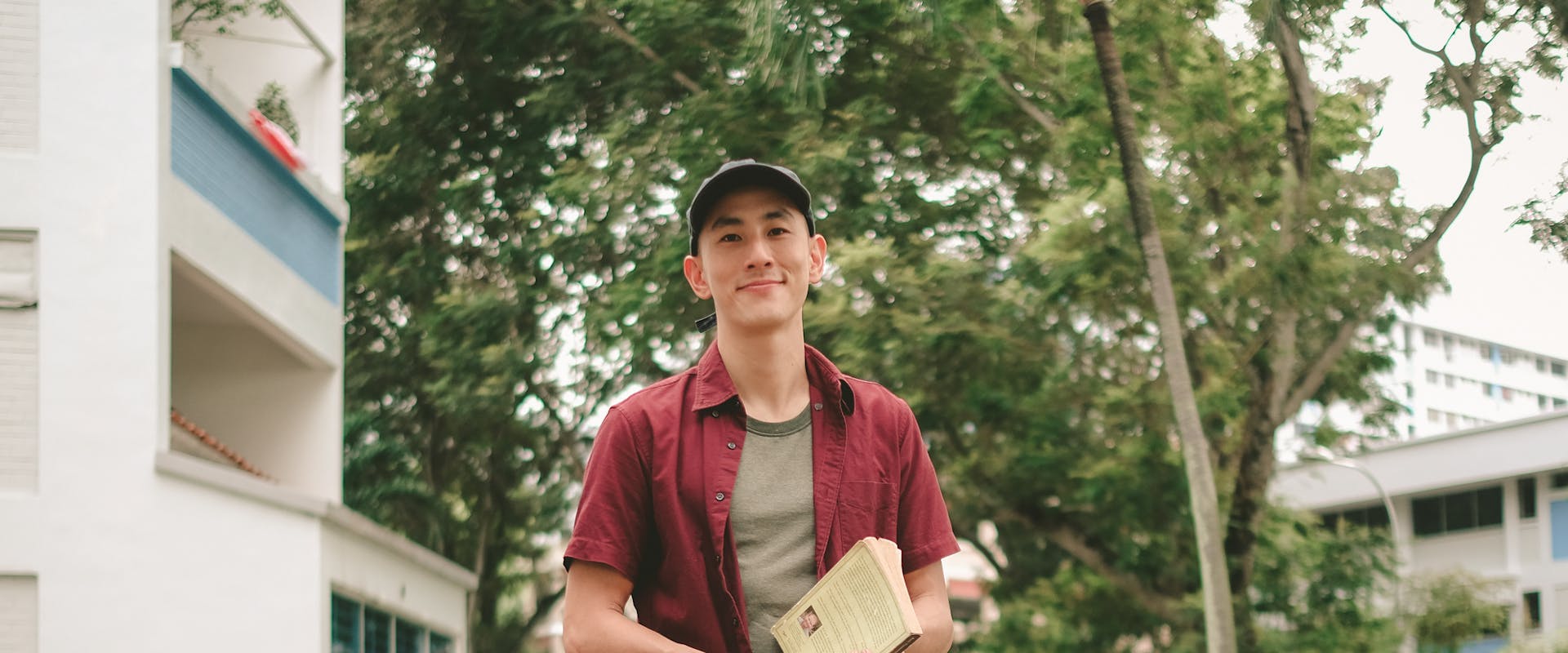
Chris - on homecoming; unpacking "sustainability", self-care for farmers and gardeners, and reality checks
This is part of a series of photo essays titled "Local Food System and Climate Change" initiated and photographed by Jen Chan, with the first 3 stories written by Chen Chingwei, and this article by Megan Sin. The photos in this series are made between May 2020 and April 2021.
Chris is standing on a plot of grassy-land just behind the first-story houses in a HDB (Housing Development Board) flat. At the time that the photos were taken, 2 years ago, the ground was covered in a wild and freely meandering pumpkin plant, with a few young “toddler” papaya plants. Now, the pumpkin patch no longer exists. Fortunately for the papaya trees, they continue to grow tall and mighty. Like the fate of the pumpkin and the papaya trees, Chris looks back on his endeavours and adventures in the past two years: the transition from a pumpkin patch to a rooftop community garden, his project working at a local grocer as a vegetable sourcer, and his takeaways from his learning trips to farms overseas. Some that have come to fruition and/or withered, some that are thriving and blossoming, and some that are still in their initial sprouting stages.
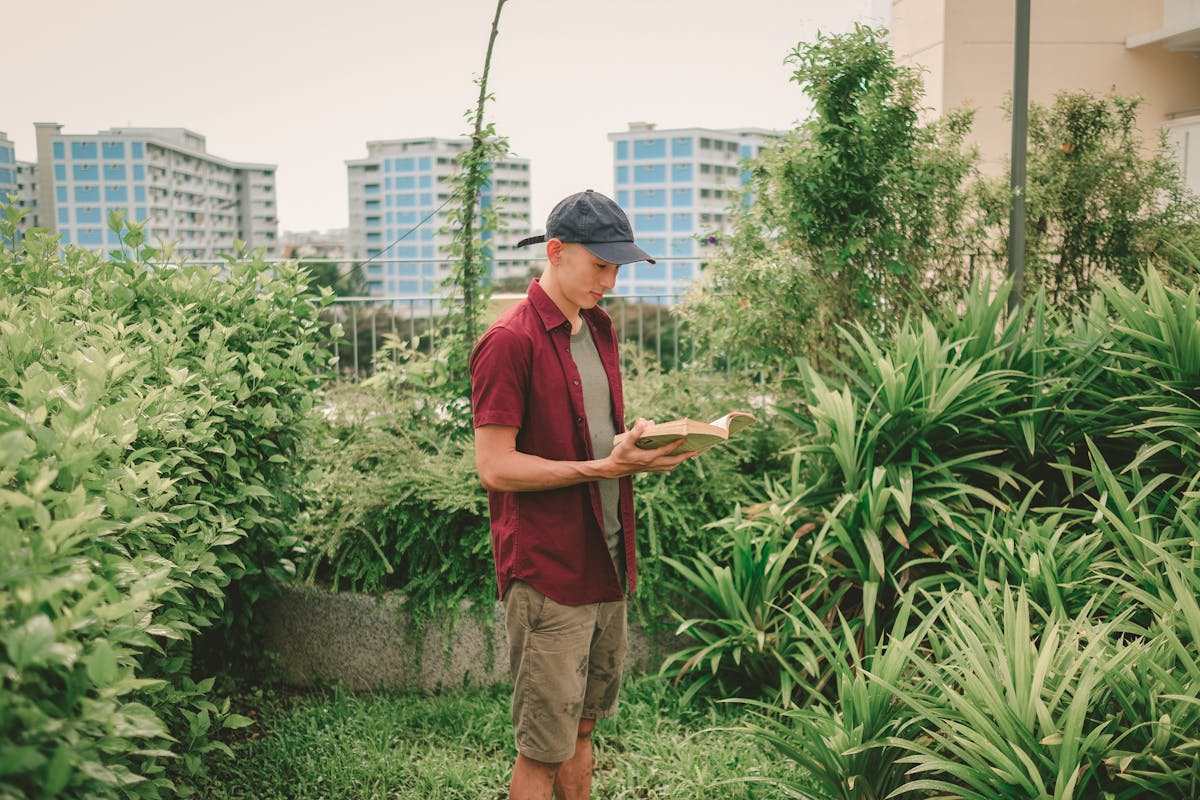
Chris stands amidst a wild growing bush of pandan and lemongrass.
This garden you see in the photo above is on the rooftop of a multi-story carpark on the 7th floor. Having heard from the town council that he would not be allowed to continue growing at the pumpkin patch, Chris endeavoured to find another possibility of growing a garden, legally and openly in his neighbourhood. And surprise surprise! The saying, ‘the right person, at the right time’. Chris heard back from the town council after months and months of email exchanges. That floating land of garden would soon be home to his community garden. Chris has also documented his journey of initiating a community garden, from recording attempts to secure the plants growing on the pumpkin patch, to the process of starting a community garden in collaboration with the town council. This journey spans out in a three-part series with the first making a case for his edible garden.
With the end of the pumpkin patch, comes the beginning of a community garden initiated by Chris, now endearingly called Nutopia. (It even has its own Google location.) In the 2 years that have passed, Chris experimented with creating his ideal open-concept community garden, one that would practise regenerative agriculture methods, grow perennials like a food forest and open to anyone to visit and harvest. Chris’ initial intention for the garden, was for it
“to have an open community garden, where anyone could come in and harvest produce. With that design in mind, it would be good to grow low maintenance plants; things like sweet potato leaves, wild watercress, perennials that would withstand people — I was imagining people who do not know how to harvest vegetables, just cutting it with no skills. This would be a good way to accommodate that kind of harvest stress. So a lot of the garden was quite food forest-y in that aspect.”
However, Chris’ intentions and preferences towards a food forest, an open garden and planting these perennials were challenged and questioned by the responses from fellow community gardeners and visitors.
“The team [volunteers and myself] initially struggled with that idea of anyone coming to harvest. Even though I told them, “this is how it is going to work…”, they may not have really internalised it. So in the first year we had to do a lot of accommodating with each other, reminding my team members, “this is the original vision “ because they were worried about theft and people taking everything.”
Secondly, the preference for and interest in growing perennials, namely wild watercress, Brazilian spinach and sweet potato leaves were not shared by other gardeners and did not entice visitors.
“The thing is, despite a lot of visitors to the garden, the irony is, firstly the perennials that grew, grew extremely productively. At the same time, it wasn't harvested much, by anybody, including myself, for consumption.”
These perennials have been preferred as they have acclimatised to Singapore’s weather, common soil condition and grow abundantly even when neglected. However, these plants being unfamiliar to many, meant that there was little interest in the plant and people were not inclined to harvest them as they did not know how to use them. Whenever Chris visited the garden, these perennials took up much gardening time as they had to be cut back. The abundance that turned excessive and was under appreciated — Chris could not compost all of the pruned perennials and had to throw them away.
“So I think people, my team members as well as people visiting the garden, started to lose interest in the garden. It was meant to be a space for people to sit, relax and enjoy. But I think visually there was nothing to attract them there in the first place.
…
In short, the idea – an idealistic open concept [of a garden] didn’t really take off.”
But that also meant something else is brewing~ Breaking down~ Composting~
Chris exploring indoor gardening from his bedroom planting experience
One other project, that started with similar intentions, that didn’t really take off, was Chris’ project working at a local grocer. 2 years ago, Chris started working as a vegetable sourcer at a local grocer which “was modelled after Whole Foods in the US”, with the intention to work with farmers in the bioregion who lean towards regenerative farming methods, low-intervention with the soil and less reliance on chemicals. The local grocer worked with the farms directly, and the farms would supply the grocer with all of their harvests; they did not discriminate against any of the ‘ugly’ ones. However, sometimes there were little to no harvest.
“We worked with farms using a contract farming model. We wanted to reduce the risk on the farmer’s side—we said we would take in all the produce regardless if it’s good or bad. So we found that that was a big challenge. Working with especially these organic farmers, the consistency was never there. Some weeks there would be a lot of produce, some weeks there would be little produce due to crop failures.”
With organic farming, there is no perfection and guarantee in terms of quantity, which proves to be challenging when produce is sold and transacted through a commercial and profit-driven market. Furthermore, living in (currently) import-dependent Singapore means that the majority of the prices we pay for, factor in air freight prices. For an independent local grocer, these cost are too heavy for the company to absorb and not small enough for a customer to bare when it is included in the cost of the products. These are just scratching the surface of the challenges of our food system.
The local grocer had to eventually resort to bringing in conventional chemical-reliant produce, selling them at cheaper rates, in attempts at covering some losses.
“We also took in ugly foods, food that were misshapen and not the perfect supermarket style and we sold for cheaper compared to the regular ones. But we realised it didn’t sell enough to make it financially viable.
We tried to do all these amazing things but I think the consumers were not ready for it - or there weren't enough consumers to take up these ugly foods or really organic—direct from the farm model—at any cost and I can understand why. If I were a consumer I would also be shocked. Maybe one papaya, we had to sell it at $20. The airfare is one thing. The farmers—we wanted to pay them fairly. So we said, “You guys give us a price and we will work with that price”. We didn’t just want to try to press the price down. We wanted to make sure it’s a win-win for everybody. But it just wouldn't move at that price.”
A utopian grocer in a world possibly inching closer to a dystopia. Unfortunately, in a market-driven economy, the small grocer had to close down within a year due to a lack of investments and the inability to scale.
Amidst these two struggling projects, Chris went on learning; he visited farms overseas which provided him fresh perspectives and offered him ideas on new ways of working with plants, with the climate, and with people.
Chris harvesting kang kong amidst the once-existent lush pumpkin patch with toddler papaya trees.
As it was eye-opening to Chris, it was equally eye-opening to hear about Chris visiting community gardens overseas. He visited mostly farms which have seasons.
“They have to focus a lot on planning for the seasons—that sort of rubs off on me—with a food forest and the tropics, you kind of take it for granted because you, [at] any time, you grow a plant plus irrigation here, it will grow so you don’t think about it too much. So in that regard, sometimes you become lazy, you don’t strategise. You just plant—there’s a gap, I’ll just plant it here. So I think that overseas experience has helped me to think a little bit about growing certain crops like tomatoes and stuff and thinking about succession so that I will have a constant stream of some of these annuals. Also, a lot of the farms I've visited, even the community ones are market gardens so things are arranged in easy to identify rows, easy to harvest, so just that visual layout actually is helpful for guests or visitors who are not familiar with the idea of a food forest.
…
[In Nutopia, the visitors] go in there and see [the garden in a food forest-style] and they can’t tell how to start. They don’t know if it’s a weed or not a weed, even though I put plant labels there. So I think just with that design of a garden market style, hopefully it helps to allow the user to, at one glance, [be able to tell] “okay so this is where all your tomatoes are, your lady fingers” and they can harvest from there.”
Chris further shares that these market gardens are community gardens, usually with a few core members who are paid and supported by countless volunteers. In these gardens, Chris observed the ways the garden beds are organised, arranged in rows whereby it would be easy for anyone to identify and easy to harvest. The organised garden beds were visually different from the garden beds at Nutopia. Nutopia being initially modelled after a food forest, was a lush plot of edibles, yet to the untrained eye, a land of weeds and lookalikes.
From his visits, Chris has put into action his takeaways—rethinking the layout of the garden, adding labels in his garden to facilitate and familiarise new visitors to the garden and to the plants.
"[Though,] there are some plants I didn't really want to move because they are doing very well but for most of the annual plants, if I have a new planting now, I just try to arrange in a visually aesthetic way where I plant it evenly spaced out, next to each other."
Experimental Chris, mis-mashing a food forest and a market garden. Perhaps if you do drop by now, you would witness a transition!
Chris checking on the soil in the garden.
With strong and clear visions, Chris is not afraid of going against norms to find a gardening practice best for him and his fellow team gardeners. Chris was rethinking what he has learnt about sustainable gardening, about regenerative practices and what that means and looks like in the context of Singapore. He suggested 3 main areas of change.
1. Rethinking what fellow gardeners and himself are interested in and would like to plant
“So this year, I decided to make a change. I decided to listen to my members. The whole time, since the start they wanted to grow more traditional crops—[what] they and other people are familiar with. Instead of watercress, they wanted to grow things like chye sim, xiao bai cai. They wanted to grow more fruiting stuff like cucumbers and chillies and all that. And so I decided that I'm going to let go and let us try this idea of growing more conventional crops.”
Chris honestly thought the tomatoes would not grow well because of Singapore’s climate. However, not only did the garden start producing organic tomatoes, with these conventional crops, the garden was receiving more visitors and the visitors were also harvesting!
Chris helped with the building of trellises for the tomatoes and after, he just sat back and let the gardeners do their thing.
“I sat back and watched and actually not only did the tomatoes fruit pretty well, the engagement was really high. The tomatoes kept disappearing, not from my team members which meant that other people were harvesting them. And later on, I started meeting visitors, and they mentioned, “Hey! Thanks for opening the garden, I've been taking and harvesting those tomatoes.”
His flexibility has opened him up to witness new possibilities in Singapore. An abundant open-concept garden with organic tomatoes, with visitors and gardeners harvesting and enjoying the space.
2. To reconfigure ways of practising regenerative agriculture methods in a community garden in the context of Singapore
"I’ve always had this strong personal opinion on what the gold standard of farming is, what regenerative farming should be and this is coined by the practices like cover cropping, no-till, making your own compost etc etc… But then I realised over time now, farming is firstly very difficult, very time consuming and in chasing that pursuit of the gold standard, you might actually end up causing more harm to yourself, like you might get exhausted, for example collecting compost materials, it has caused quite a lot of stress. Cause I have to worry about running around Singapore and logistically it’s really very tough and also at the end of the day, I might have also burned out a lot of petrol just trying to collect all these materials and [it was] physically demanding. So I felt like I was not enjoying the gardening process because I was straining myself already, physically and mentally. I think being a little more open-minded, being a bit more flexible and being open to what other kinds of farming could be, has allowed me to enjoy this journey a lot more.
Everybody has a very specific context on what is available to them. And I think another way to approach it, is if you want to live a more minimal intervention approach to gardening, including sourcing for fertiliser material, compost material, this is something that we must realise. Even though there’s this goal, the best practice idea, if the materials are not available to us, is it wise to go all out to get them? So now I’m also considering purchasing compost even though I would prefer to make it but the constraints and the context I have is that I don't have that much time as I’ve had before to make my own compost and I don’t have the availability of logistics like I had before. Like I used to borrow the family car, and on the weekends, on certain days then I can collect compost (materials) but now the family car is being used on those specific days as well. So I can’t access those materials anymore.
…
I had to mentally shift—let’s try this and see how it goes. I’m only at the start now. I’ve just planted these “so called traditional” crops and I've also been spending a lot more time in the garden. Almost every morning now, even if it's a very short time, 10-15 mins, even 5 minutes, I'll go up to the garden because it’s very close by for me, like a one minute walk. I started to pay more attention to it and I feel like I’m enjoying this process a lot more and I see myself excited about harvesting some of these crops like the tomatoes. My farming journey started many years ago when I tasted some of the very nice tomatoes in Singapore, so it’s like a homecoming of sorts. Like now I'm excited to grow another batch of tomatoes. We have other fruiting stuff like grapes which I wanted to grow for fun, like a challenge, and it’s fruiting already. So, these things are looking good."
3. Self-care for farmers and gardeners comes first
"This year, I also wanted a shift in priorities. Last year was very much about: “Let's do this nice thing to save the world, to feed the community”. But I myself hardly ate anything. It was all in theory. In theory, we can eat watercress, like I can eat all these things but I never really harvested it. So this year I made it a point to think: Why don’t I feed myself first, my family, and grow the crops that I want to grow and eat! Take care of myself first and then I can take care of other people. [The garden] is still open. People can still harvest. But there’s that shift to have more self-care. I think that’s the biggest change."
Listening to the people, is akin to listening to the plants.
Nutopia initiated by Chris and his project at the local grocer are all projects with the intention of care, of sharing and of providing. In order for these intentions to be embraced within specific contexts, it requires careful and deliberate planning. Some may work, and some may not work, yet.
And perhaps the key is: for any farmer, gardener, grower, let’s listen to ourselves first!
Chris has carved out a space at Nutopia by listening to the people. Providing them with a familiar environment to grow and experience — just like how one would care for a plant, by supplying the right soil condition. Also, listening to himself and being aware of his ability and capacity. Perhaps the best is to experiment like Chris! People and nature need to work with one another, like plants working with the soil environment — all to find out what is best for one another, and for oneself.
Chris’ words directly to all of us:
"To each their own, context is complicated, farming is complicated. Everyone has their own style of doing it so find what works for you lah."
Chris posing with a book, “Growing a Farmer” by Kurt Timmermeister
Update:
Chris has since published a book titled “Freestyle Farmer” where you can read more of his farming journey. Check it out on this website!
About the authors
Megan finds herself with multiple foots in different fields — in performance, in experimental writing, in literature and in gardens and not-gardens. Seemingly unrelated but all connected, through love for food, care for nature and humans.
Currently, she is the co-editor of Foodscape Pages and the second issue of The Sauce - On Seeds, and endeavouring into research on ecofeminism, looking forward to where she will be heading next…
I’m Chinese, but perhaps with gypsy blood. I prefer referring myself as a citizen of the mother Earth. I was born and raised in Hong Kong and educated in Canada. I’ve also stayed in Singapore and Australia. Recently I’ve moved to Berlin to continue my adventure in Europe.
Keeping a childlike curiosity towards the world I live in and my finger firmly on the pulse of society, I would indulge myself at the corner of the street soaking up every detail of a building or mannerism of a passerby. A somewhat introvert who sometimes just hides inside her hamster ball. I started taking portraits to build the bridge to connect with people. I strive to create meaningful experiences through taking photographs and I continue to try to capture a sense of curiosity, compassion and sensitivity in my photos.
Share this article
Dig Around
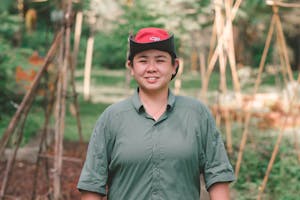
Michelle - the "not-farmer" of edible wild greens
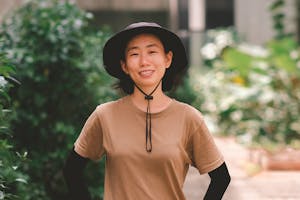
Ee Peng - a syntropic Zen farmer in an industrial space

Marcus - your friendly neighbourhood (market) farmer
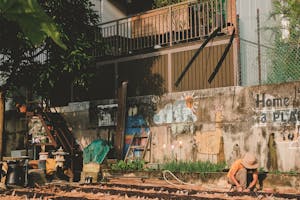
Local Food Systems and Climate Change
Contact Us
Drop us an email or DM on Instagram if you would like to give us feedback, support us in any way, or just to connect!
Foodscape Collective
Foodscape Collective is a ground-up community with a mission to co-create a fair and inclusive circular food system for all. We work together to create communities and livelihoods through collaborative and supportive practices.
Copyright (C) 2025 - Foodscape Pages. All Rights Reserved